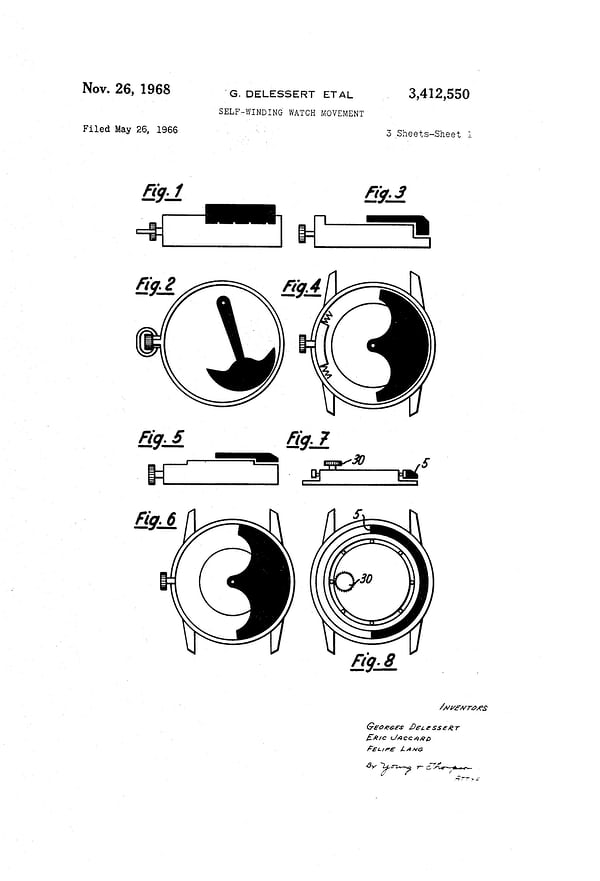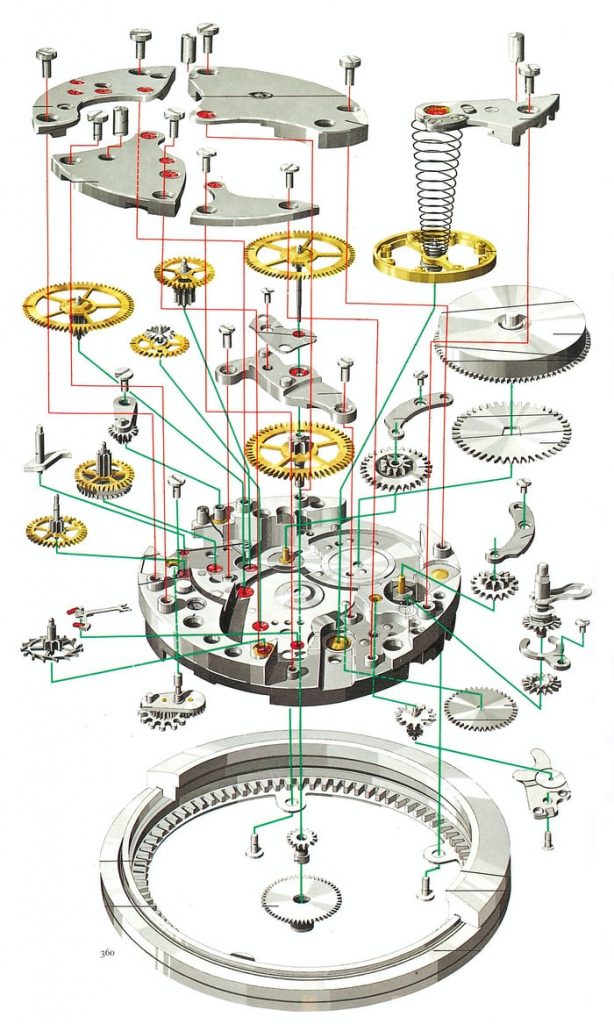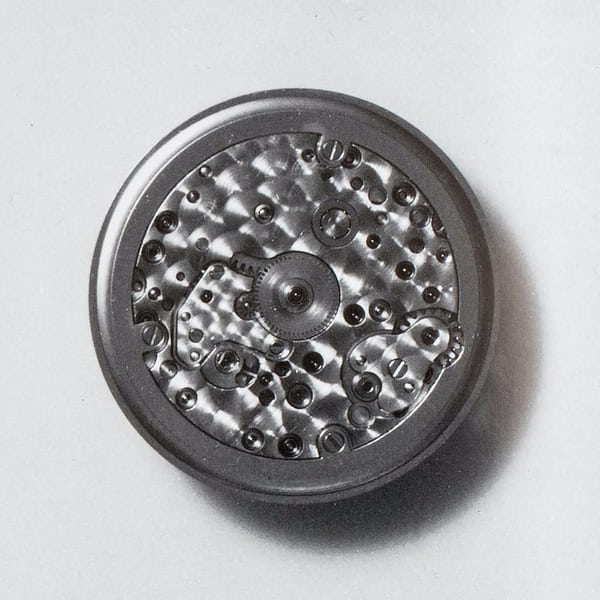About a month ago, Robin Swithinbank brought us news that a titanium perfect fake Audemars Piguet Royal Oak Perpetual Calendar for Japan would be available globally. Today, we’ve got another take on the titanium RO Perpetual, this time for the US market, with limited availability in other markets slated for October. Knowing what interest in the best replica Audemars Piguet Royal Oak is these days, this is the kind of watch that will almost certainly be hard to get one’s hands on, even if the $80,000 price tag is no barrier. Fortunately, we were able to shoot one earlier this week, and I spent some time with it. Join me as we take a closer look at what figures to be a really hot take on an already hot watch.
When it comes to the Swiss made Audemars Piguet Royal Oak replica, the perpetual calendar is the main draw for me among the complications. Produced in a range of materials including ceramic, and made in open-worked and close-dialed variations, it’s the watch that I see in my mind when I close my eyes and think of AP (after the Jumbo, of course).
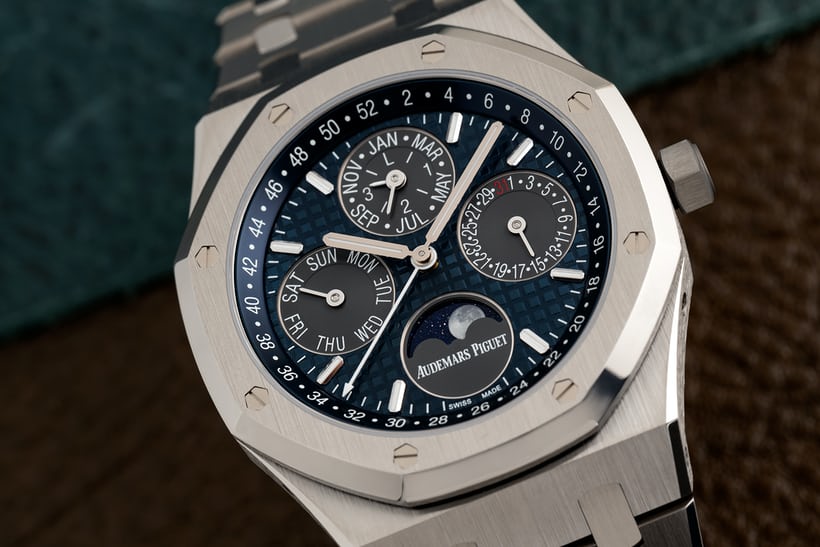
The best replica Audemars Piguet Royal Oak case and bracelet’s contrasting polished and brushed finishes are a part of what has caused this design to not only endure but become more appreciated in its 49 years. There is a subtlety and intricacy to the finishing on the links, bezel, and various beveled edges that, to my mind, evince not just a great design but demonstrate the technical capabilities required to execute on such an exacting design.
Imparting this sort of finish to a soft precious metal like gold, or to steel, isn’t simple by any stretch, but finishing a metal like titanium or in the most extreme case, a material like ceramic, is a level all of its own. For the titanium watch here, the process is slowed down in order to avoid overheating of the material. The tooling wears out faster.
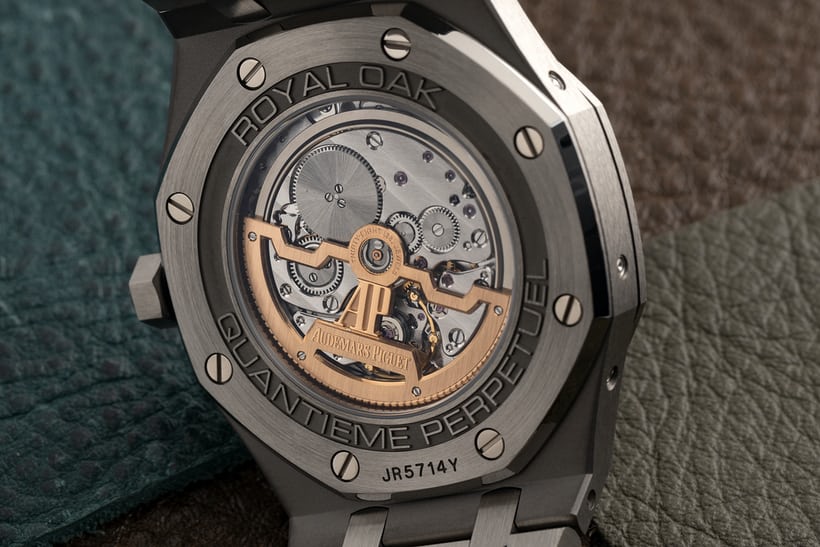
Where this new model differs from the Japanese edition I already mentioned is in its dial, which has a classic blue Grande Tapisserie pattern matched with grey subdials. The grey of the sub-dials brings out the color of the titanium case and bracelet in a really understated way that makes this watch, in all honesty, my favorite replica Audemars Piguet Royal Oak Perpetual Calendar, to date. It’s sort of low-key for a best fake Audemars Piguet Royal Oak high complication, and I’m fully aware of how weird it must be to read that as I type it out. But if you were, say, faced with choosing only one RO, I can see this watch fully scratching the itch and not feeling like an extreme tangent in your collection. It could be your first and only Swiss made replica Audemars Piguet Royal Oak watches.
On the wrist, it wears like a dream, so incredibly light and comfortable. The one I tried on was an extra link or two too big for my wrist but I had no problem imagining exactly how good this would feel if it was sized for me. I can dream.
The dial’s subtlety has a way of shifting with light conditions that I noticed in other RO perpetual calendars, as well, including the white ceramic. The second I put this watch on my wrist in the HODINKEE office, my phone was out and I was taking wrist shots. But the first shot I took near my desk revealed a dial that looks almost uniform, with no Tapisserie pattern to be discerned. The sub-dials appear to blend into the rest of the dial, more or less, while still being completely legible. But when I took it into the resplendent natural light of the “library,” where we take some of our best wrist shots, well, the tap pattern jumped right out and announced itself, and the sub-dials popped. This is such an interesting watch to look at in different lighting conditions.
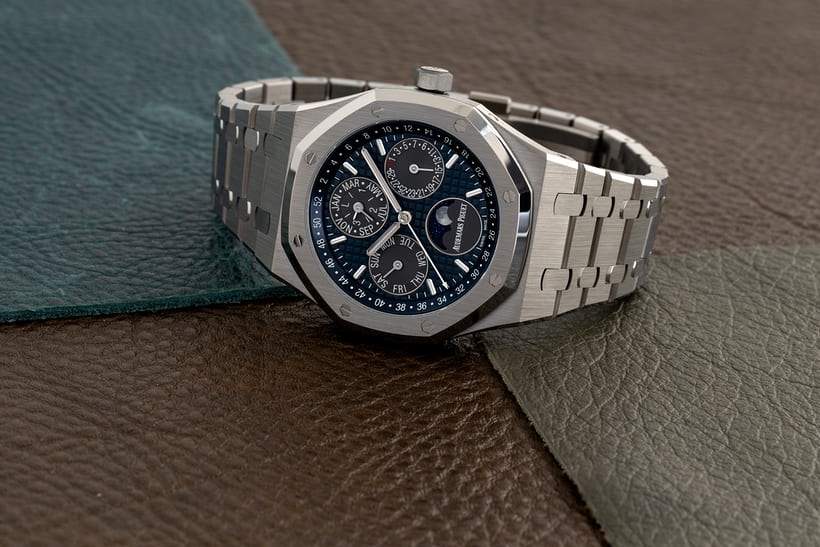
The 41mm titanium case and matching titanium bracelet are so light, comfortable, and balanced that my first impression was to hover my wrist up and down gently and just feel the weight, and smile. The case is 9.5mm thick, but the watch wears quite a bit thinner. If you’re conditioned to wearing AAA perfect replica watches with a bit of doming to their crystals, the AAA high-quality replica Audemars Piguet Royal Oak may have a way of sneaking up on you in this way. That and the meticulous integration of the bracelet give the impression that you are wearing a perfectly contoured, but not especially supple, cuff, which wants to hug and stay low on your wrist.
And the dial looks and feels balanced too, with all of the information of the subdials grounded in the background of the tapisserie pattern when the light hits it right. One of the things I like most about the perfect UK sale fake Audemars Piguet Royal Oak Perpetual Calendar is its incorporation of a numbered week display. Thinking about the calendar year as being broken up into 52 weeks is much more common in Europe than it is in the United States, but using the rehaut to impart this information gives an at-a-glance sense of how far into the year you are, which to me seems like a fine use of space in a watch designed to digest and present the Gregorian calendar in a user-friendly way.

